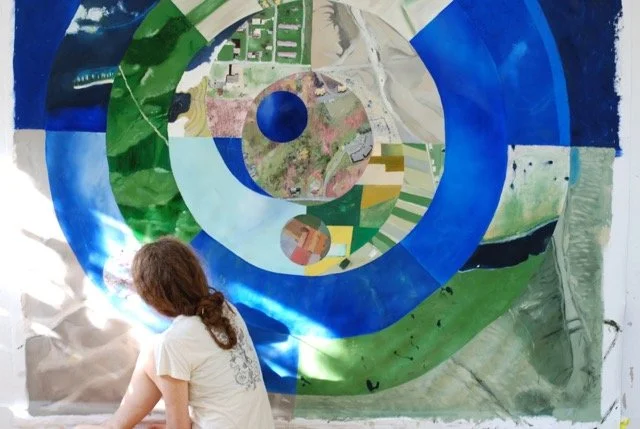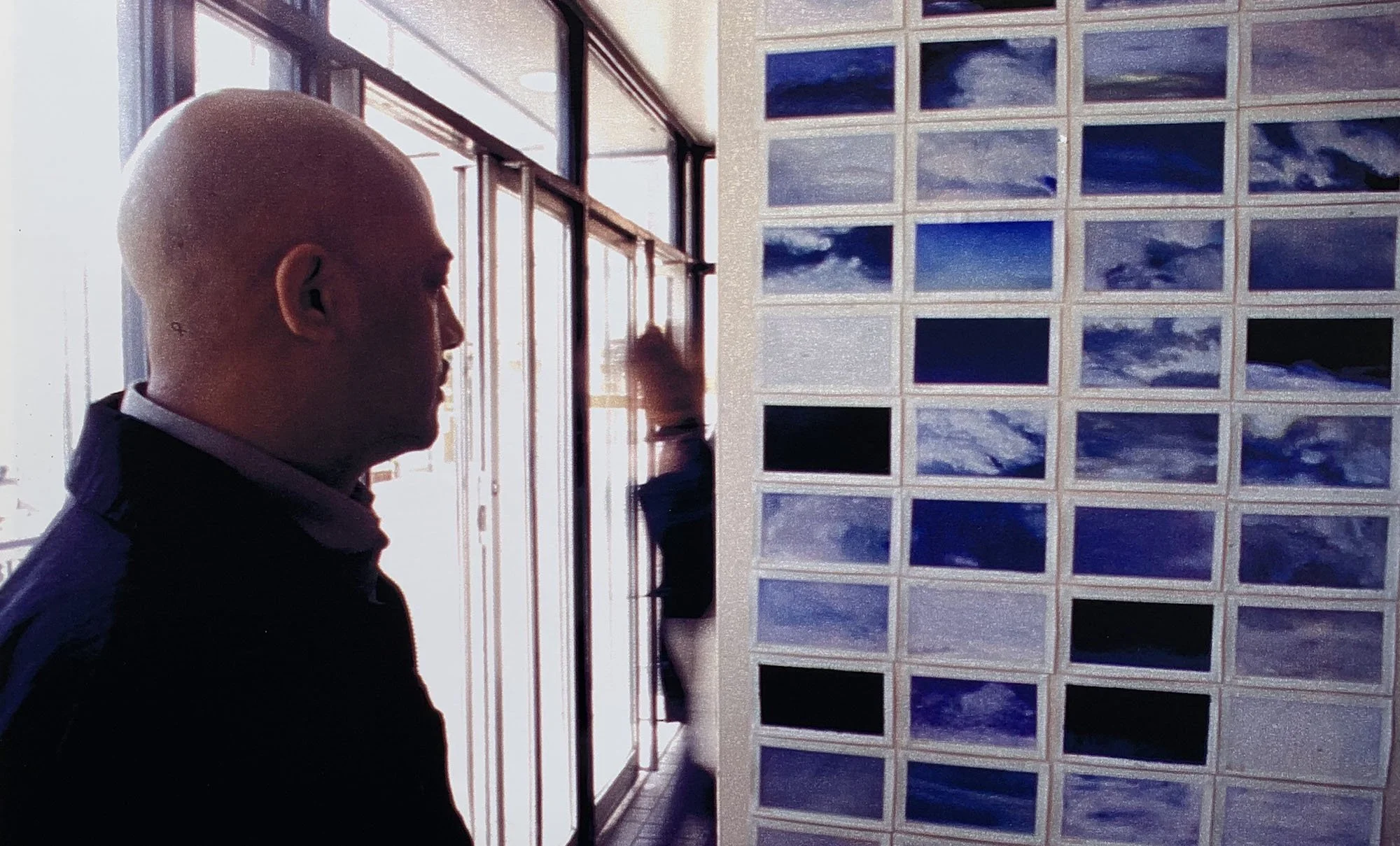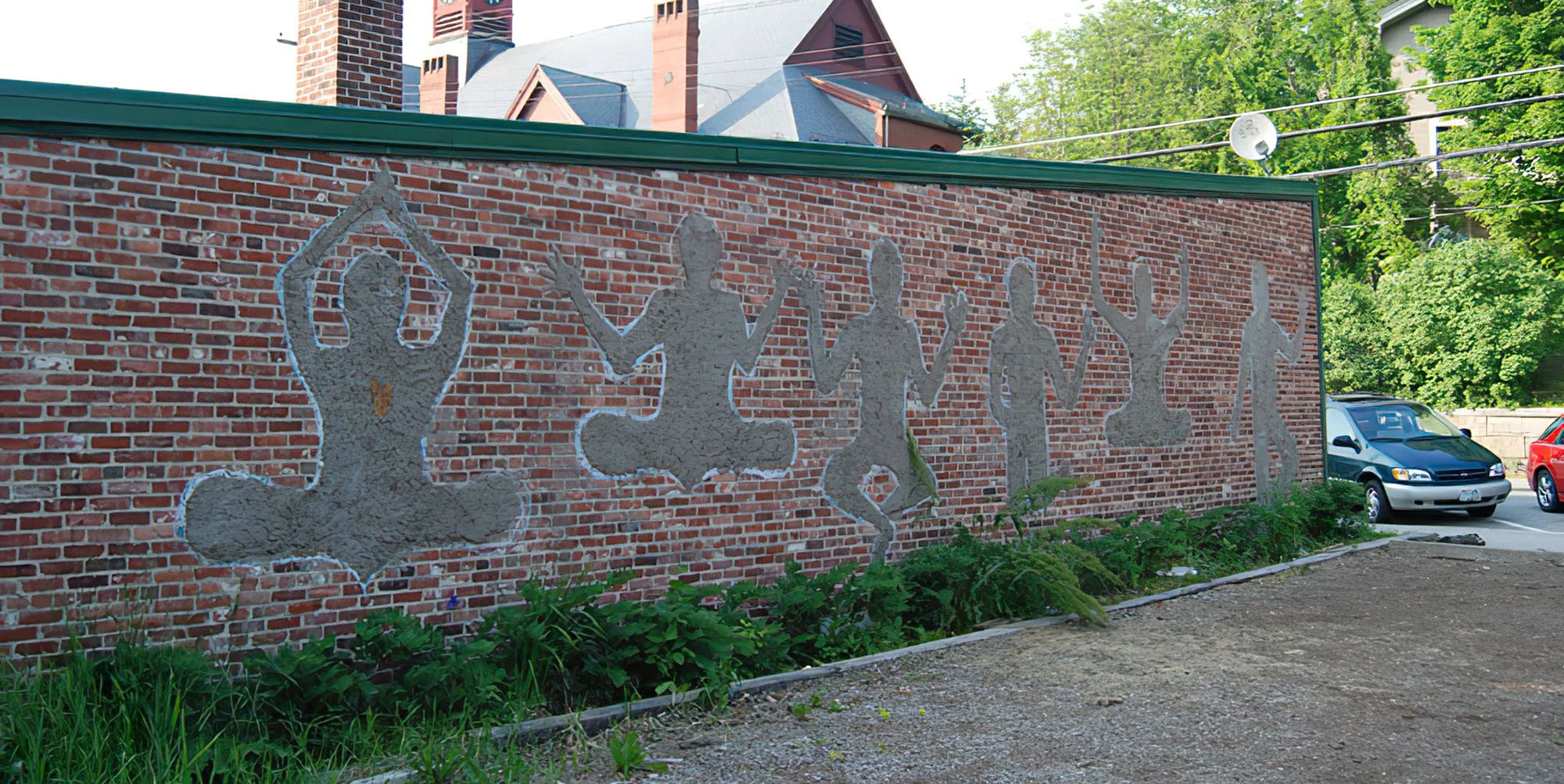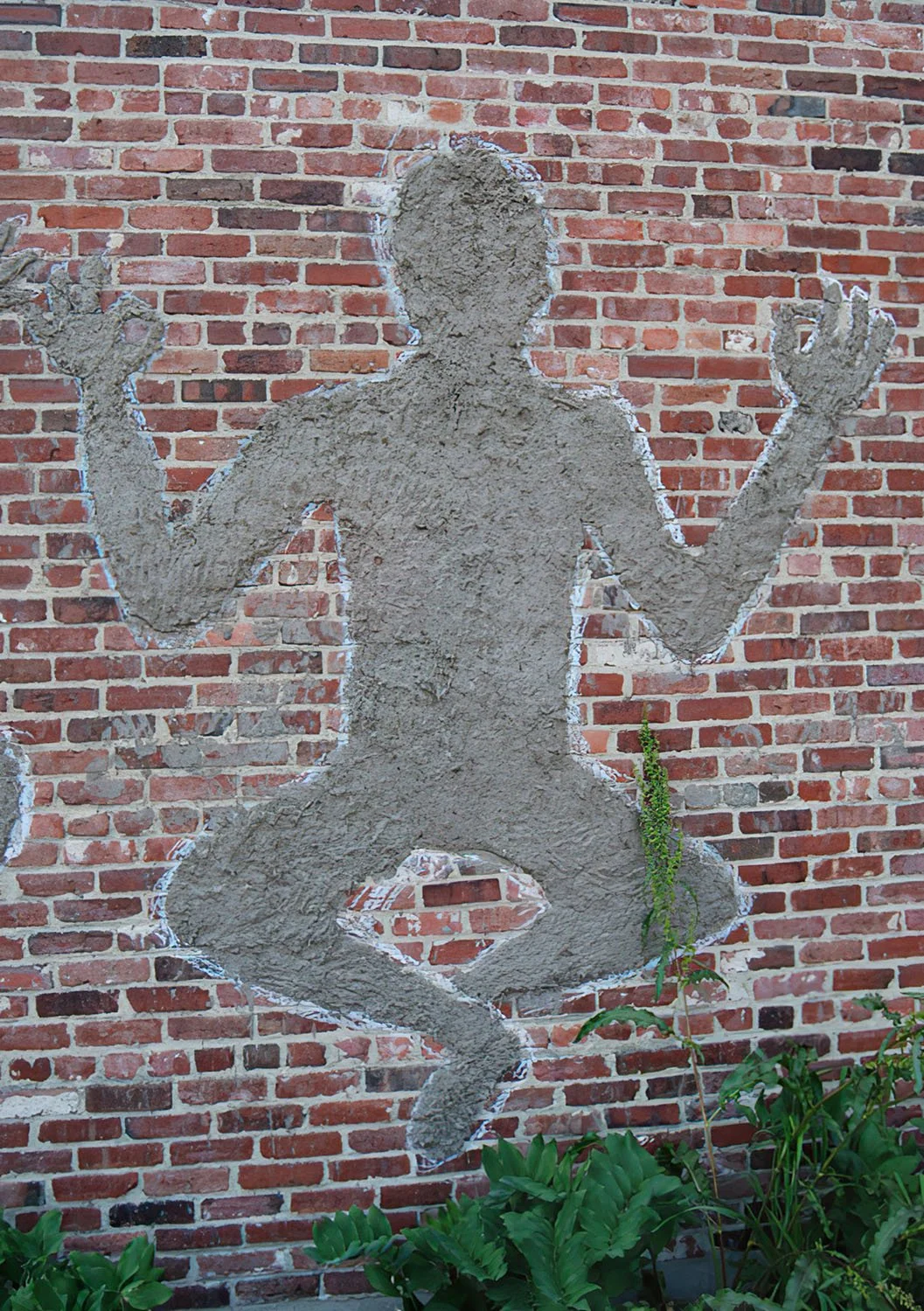
Public Art
Wherever You Are Is The Center Of The World
“As viewers we are invited to enter into a dynamic conversation about the natural world, philosophy, history, art, technology . . . in short, the universe and humanity’s place in it.”
Through Google Maps and chance operations, the artists Joan Hanley and Susan Q. Brown explored the planet and painted the earth. The result was eight 6 x 6 foot oil paintings with an installation with projected video at the Brattleboro Museum.
Renaissance painters said that the most important image of all is one of the world in which we live. This kind of image gives us a cosmology, tells us who we are by showing us where we are. They believed that there is magic in a powerful image of our universe.
“For us, looking at the earth day after day felt quite intimate. We stumbled upon uncanny coincidences and began to see more and more in the lands and seas of our living planet”. —Joan Hanley
Office Hours
During a residency at Broadstone Studios in Dublin, Ireland, I painted the Irish sky every morning at 4 a.m. and every evening at 4 p.m. for three months and then installed the 180 paintings in the Dublin Immigration Office. I had noticed a tension in Dublin that year about the increased immigration. I painted the sky to suggest that we could learn from the clouds as they move freely and we don’t worry whether they are Irish clouds, German clouds or American clouds.
I had just arrived in a new country with an eight and a twelve year old and a partner involved in writing a new book. It would have been easy to accomplish little in the studio that year. But this daily practice centered me. In addition, because it was so predictable, my family could adjust around it. If it was 4 o’clock, they knew I was painting—whether at football games, in gardens, or often on rooftops. The sky was always there. Through this painting practice, I had many conversations about art, clouds, and immigration.
“When Joan Hanley and I lived with our children for a year in Ireland, we had to pay an official visit to the immigration office. I saw Joan looking closely and carefully at the place, and I wondered what was going on in her head. She was conceiving a public art project to be in direct response to the lack of beauty, civility, and respect for persons we saw in that place, attitudes quite different from those we found generally among the Irish people.
Once again, she linked spiritual practice with art by painting small pictures of the Irish sky at four am and four pm every day for three months. She called the work “Office Hours,” an allusion to the chanting of psalms by monks at specific times of the day. The paintings are the size of twenty-pound notes, reflecting officers’ concerns about the financial status of immigrants. In several months the 184 paintings were completed and exhibited in a small glassed-in cubicle at the entrance to the immigration office, creating what she saw to be a “chapel” for people coming to make a life in Ireland.
The clouds are not symbols, but they do suggest to the Irish the particular sky that is so familiar to them, and to immigrants and immigration officials the notion that some things take no notice of artificial national boundaries. I have my own associations to these clouds: a sense of time passing in relation to the weather, echoes of Turner’s subtle landscapes, the sheer beauty of the twilight and daybreak sky, my love of Ireland, and Joan’s skill at evoking many layers of experience in a single, commonplace natural object.
The sky is an image that often suggests infinity, divinity, fate, and the mysterious. But clouds bring it close, making an otherwise pure and limitless space intimate and imagistic. There is something friendly about the clouds that speed over Ireland keeping the land green with gentle showers for the most part. These qualities are compressed in these beautiful small paintings. They also represent her current interest in playing a role as an artist in the life of the commons, those areas of public life that are not interpreted fully by politics, government, and the media. Joan Hanley’s paintings of the clouds bring a sacred perspective to the movement of people among nations, offering both a critique of current immigration methods and a more natural, spiritual, and humane vision.”
—Thomas Moore
Axis Mundi
In the spring of 2002, Joan Hanley and Susan Brown sat in meditation each day for 40 Days on a plot of town-owned land tainted with arsenic. This spot just east of downtown along a river became the focus of their art practice for those six weeks. Previously they had addressed community issues through their paintings and had practiced and taught meditation locally as two separate activities. For this project their meditation, along with site-specific installations constructed with area teens, was their art.
As part of this project the artists hosted workshops for teens by visiting artist Jon Brooks and environmental educator, Keith Badger. The community was invited to join in the meditation( JerriAnne Boggis joins them in the photo above). Axis Mundi culminated with indoor and outdoor exhibits at the Wilton Arts Festival.
Mud Murals
“Innovative and engaging … Joan Hanley and Susan Q. Brown continue to demonstrate the transformative qualities of art, deeply, powerfully, and wildly in creative new forms. Their practice weaving in participatory process, makes their work distinctive and memorable.”
Thanks to Ethan Hamby and Shana Brautigam from “Rooted in Clay” who brought their recipe: organic dirt and grass clippings, and re cycled clay slip to these Murals in Wilton and Keene New Hampshire.








